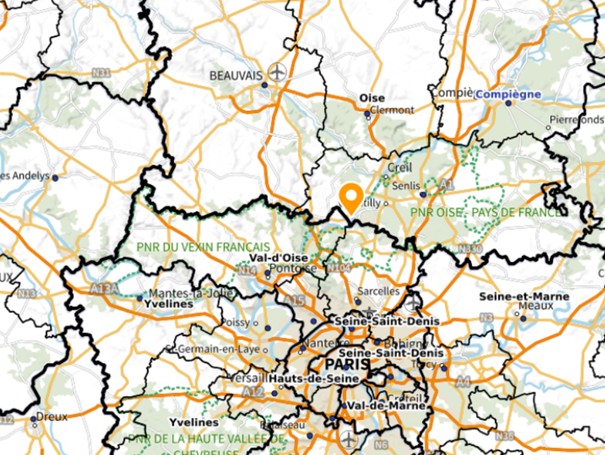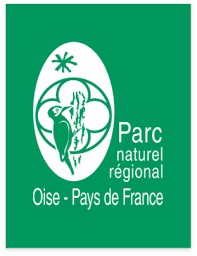Label Bas Carbone certified project
The reforestation project in the Boran-sur-Oise forest, located 10 km from Chantilly, aims to restore a stand of Ash trees severely affected by Chalarosis and Robinia trees that are in a state of serious decline. The project involves planting 6.32 ha of Downy Oak, Small-leaved Lime and Norway maple in equal proportions, while retaining habitat trees throughout the plot. The planting of native hardwoods is favourable to local biodiversity, and the project owner is keen to restore floristic diversity and strengthen the forest's resilience in the face of climatic challenges.
Close to the Nonette valley and the wooded corridor along the Oise, the forest plays as key role in the local landscape. The project involves harvesting only the areas affected by dieback, while preserving the wooded areas surrounding the dying zone. This targeted intervention, carried out in the heart of a forest surrounding a historic monument, guarantees that the landscape will remain undisturbed.

Boran-sur-Oise, Oise (Hauts-de-France), 10 km from Chantilly
6,32 ha planted
Downy oak, Small-leaved lime, Norway maple
About 9480 trees


The project is located in the Hauts-de-France region, in the department of Oise, which has an afforestation rate of 23 %, higher than the regional average of 15 %. The Oise forest is predominantly deciduous, with a predominance of oak, beech, ash and poplar. However, these stands are threatened by Chalarosis and successive droughts, as is the case in the Chantilly state forest, where the old oaks are dying back. The project is set against this backdrop, with major landscape issues at stake in area where urban areas and natural forest spaces coexist.
Although the Schéma Regional de Cohérence Ecologique (SRCE) has not yet been adopted, the project is part of a wooded corridor that is essential for the connectivity of forest massifs. It also lies within the Parc Naturel Regional Oise-Pays-de-France, renowed for its 28,590 hectares of forest and its biodiversity. This park aims to preserve ecological continuity and reconcile landscape preservation, architectural heritage and sustainable economic activities, despite strong urban pressure.
The plot does not yet have a sustainable management document: the project will provide an opportunity to adopt a Code of Good Forestry Practices.
The Boran-sur-Oise project falls within the scope of the "Reconstitution de forêt dégradée du Label Bas Carbone" (restoration of degraded forests) method, a certification examined and issued by the French Ministry of Ecological Transition (DREAL).
The aim of our project is to provide a diversification of native hardwood species, evenly destributed, with the planting of Downy oak, Small-leaved lime and Normay maple.
We are preserving at least 13 trees of ecological interest on the plot
Common ash was badly hit by Chalarosis disease, and Robinia suffered from repeated periods of water shortage and hot wheather.
We delimited the decaying area and preserved the healthy wooded areas surrounding the project. In this way, the landscape is preserved within the historical monumen protection perimeter.